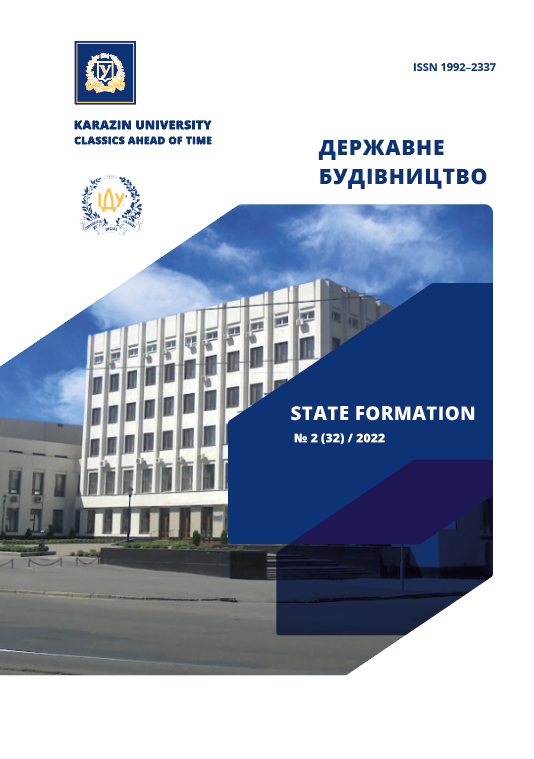Spheres of influence and tools for implementing hybrid threats: models and mechanisms
Abstract
The article provides a solution to the current scientific problem of substantiating and distinguishing spheres of influence and tools for the implementation of hybrid threats in the context of defining models and relevant mechanisms. It is comprehensively argued that hybrid threats are aimed at changing states and creating necessary situations in several areas by applying combinations of tools. Each tool targets one or more areas or the interaction between them, creating or exploiting a vulnerability or exploiting an opportunity. This is why it is important to identify the areas of possible influence or critical functions that a state must ensure resilience against hybrid threats, as they are strongly related to national security and the state's decision-making capacity.
According to the results of the analysis of literary sources on hybrid threats, thirteen spheres of influence are distinguished: political, economic, infrastructural, legal, social, cultural, military, informational, cybernetic, public administration, diplomatic, intelligence, communication. It has been proven that in each sphere there are specific models and mechanisms by which a hybrid threat actor can cause the desired effect for him, moreover, this effect can cover different spheres, as they are closely related to each other.
It was established that before the emergence and spread of the concept of hybrid threats, the main approach always included military intervention and physical occupation as a prerequisite for capturing an independent country. But in modern conditions, significant control of an actor over a certain object can be achieved without mandatory participation in open military operations. In addition, actors can use a hybrid threat strategy to weaken the target state without any intention of physical control. This means that a military-oriented approach may not provide an accurate picture of the entire spectrum of current threats and challenges. It is shown that in any conceptual work it is important to find a balance between detail and analytical value of generalization. It may be worth noting that there are still multiple subfields, and some of the examples below show combinations of different fields, so there may be alternative approaches to both consolidation and expanding the domain list.
Downloads
References
Nemeth, William, J. (2002). Future War and Chechnya: A Case for Hybrid Warfare. Monterey: Naval Postgraduate School.
Newton, K., J. W. van Deth (2010). Foundations of Comparative Politics: Democracies of the Modern World. 2nd ed. Cambridge: Cambridge University Press.
Norris, William J. (2016). Chinese Economic Statecraft: Commercial Actors, Grand Strategy, and State Control. Ithaca: Cornell University Press.
Nye, Joseph S. (2013). What China and Russia Don’t Get About. Soft Power. Foreign Policy. DOI: https://doi.org/10.2307/1148580
Nye, Joseph (1990). Soft Power. Foreign Policy, 80, 153–171. DOI: https://doi.org/10.2307/1148580
O’Rourke, Ronald (2018). A Shift in the International Security Environment: Potential Implications for Defense – Issues for Congress.
Oyserman, Daphna, Spike W. S. Lee (2008). Does Culture Influence What and How We Think? Effects of Priming Individualism and Collectivism. Psychological Bulletin, 134 (2),
–342. DOI: https://doi.org/10.1037/0033-2909.134.2.311
Pacheco, Fernando Celaya (2009). Narcofearance: How Has Narcoterrorism Settled in Mexico? Studies in Conflict & Terrorism, 32 (12), 1021–1048. DOI: https://doi.org/10.1080/1057610090331979 7
Pamment, James, Howard Nothhaft, Henrik Agardh-Twetman (2018). Countering Information Influence Activities. Swedish Civil Contingencies Agency.
Parton, Charles (2019). China-UK Relations Where to Draw the Border Between Influence and Interference? London.
Pindják, Peter (2014). Deterring Hybrid Warfare: A Chance for NATO and the EU to Work Together? NATO Review.
PSSI (2018). Europe’s Preparedness to Respond to Space Hybrid Operations.

